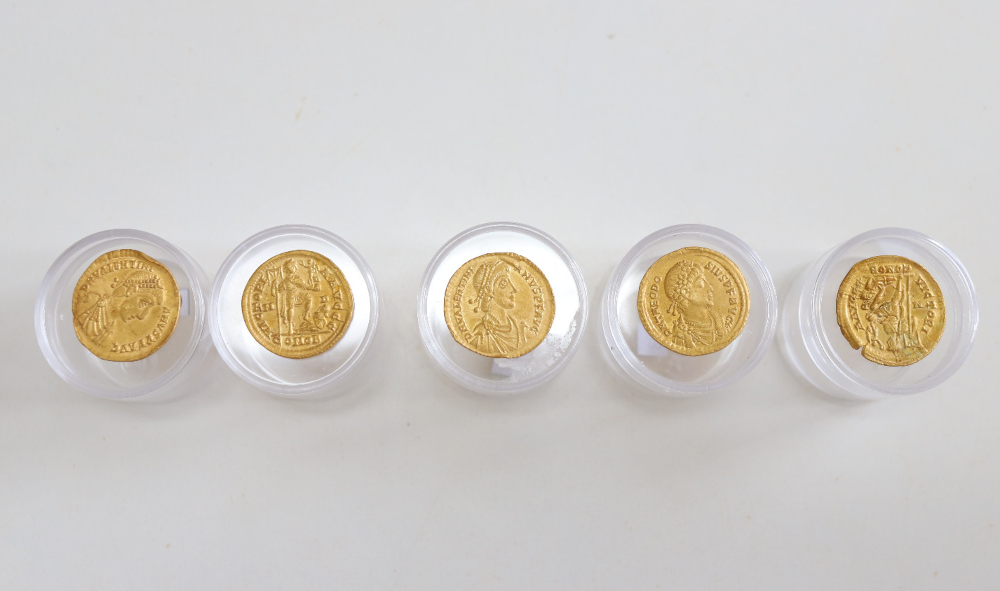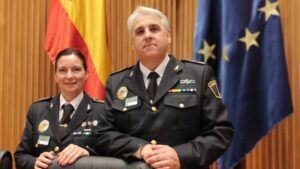The Portitxol treasure will return to Xàbia after restoration of more than 50 gold coins
Once the analysis and restoration work has been completed in Valencia, the coins will be exhibited at the Soler Blasco Archaeological and Ethnographic Museum.

Wednesday 19th October 2022 – Mike Smith
Source: Ajuntament de Xàbia
The Institut Valencià de Conservació, Restauració i Investigació (IVCR+i) (English: Valencian Institute of Conservation, Restoration and Research) has completed the restoration of the 53 gold coins from the 4th and 5th centuries that were found on the coast of Xàbia in August 2021.
The fortuitous find was made by the families of Luis Lens and César Gimeno while diving and marked the beginning of an important archaeological project. After being notified to the General Directorate of Cultural Heritage and verifying its importance, underwater excavations were planned at the site, in collaboration with archaeologists from the University of Alicante, the Xàbia City Council and the GEAS of the Guardia Civil.
The archaeological research provided new findings about the discovery. According to the preliminary study, it is a set of gold coins from the end of the 4th century and the beginning of the 5th century, during the eras of the Roman emperors Arcadius, Valentinian, Theodosius and Honorius.
All were taken to the IVCR+i for proper restoration. The main problem with the coins was of biological origin produced by the embedding of marine polyps which electron microscopy analysis discovered was calcium, iron and other minor chemical elements.
After documenting the state of conservation by microphotography and the physical-chemical analysis of the adhered elements, cleaning was carried out with ultrasonic baths with a low proportion of EDTA (acid used in cleaning and restoring metals). Afterwards, they were subjected to a drying process under controlled temperature conditions and the cleaning of adhesions by mechanical means was completed.
Subsequently, the metallographic analysis of the gold by X-ray fluorescence has been carried out to determine the characteristics of the metal and its degree of purity and to obtain information on the origin mints and the minting process.
Once the analysis and restoration work has been completed, the coins will return to Xàbia and will be exhibited at the Soler Blasco Archaeological and Ethnographic Museum. For this, the museum has provided itself with the necessary security means to exhibit the treasure, from a special security cabinet with anti-theft systems to a video surveillance system.





